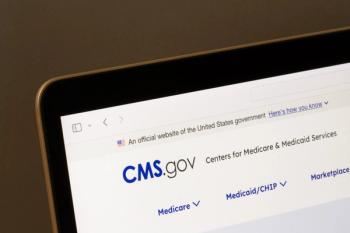
- Vol. 164 No. 6
- Volume 164
- Issue 6
Pharmacists Get Involved in Direct Patient Care
How one large health system and insurer are helping pharmacists and physicians team up.
Blue Cross Blue Shield of Michigan (BCBSM) is teaming up with Michigan Medicine, the large healthcare system operated by the University of Michigan, to embed ambulatory care clinical pharmacists in primary care settings across the state.
Pharmacists participating in the initiative, the Michigan Pharmacists Transforming Care and Quality (MPTCQ) program, operate under collaborative practice agreements with physician organizations. They can make medication changes and provide disease state management in the areas of diabetes, hypertension, and hyperlipidemia. The pharmacists also provide comprehensive medication review services and work in tandem with primary care physicians to address patient needs.
The program is unique because of its wide-scale adoption across the state and its support from the state’s largest commercial payer. The program also includes a structured and standardized training and mentoring program targeted at pharmacists as well as physician organization leadership to ensure the success of embedding pharmacists into clinical practice.
“BCBSM helped support us to build a coordinating center at University of Michigan to help provide training, support, and tool kits, and really help our other organizations around the state to implement a pharmacist into the care team and primary care,” says Hae Mi Choe, PharmD, associate dean for pharmacy innovation and partnerships at the University of Michigan College of Pharmacy in Ann Arbor. Choe is in charge of the program.
To date, 30 pharmacists are embedded in 52 practice sites across the state. Pharmacists work directly within the primary care clinic. One pharmacist may spend a portion of a day or several days within a clinic each week, depending on the clinic’s need. The program, which began in 2015, has helped 7,685 unique patients so far, for a total of 23,701 patient encounters. BCBSM pays pharmacists for the visits they conduct with patients and helps physician organizations offset a portion of the cost of employing a pharmacist on site during the first two years they participate in the program.
Patients are either referred to the pharmacists or pharmacists can recruit patients themselves by identifying those who are having difficulty meeting their targeted therapy goals.
“They all have their own schedule in the clinic so that patients can be referred and [pharmacists can] see patients independently and be able to assess their disease control as well as reviewing their medications,” says Choe.
Improving Patient Care
Choe and her colleagues are tracking a variety of outcome measures, including medication adherence statistics, patient data on controlling blood pressure, and improving patients’ A1c numbers, in an effort to demonstrate the value pharmacists bring to primary care settings. They plan to report on these outcomes in upcoming studies; however, Choe says she’s already seen the tremendous value pharmacists can provide.
“While physicians might be more focused on diagnosis and treatment, our specialty is really on the management or treatment of chronic conditions. That’s where I think we could offer a different perspective and a different skill set that physicians may not have, given the complexity of the medications,” she says.
Having dedicated pharmacists who are charged with optimizing treatment regimens, improving patient engagement, and providing enhanced education, also lessens physicians’ workloads and improves the quality of care, Choe says.
Articles in this issue
over 7 years ago
How Pharmacies Are Confronting Rising Drug Costsover 7 years ago
How to Differentiate Between Look-Alike Sound-Alike Drugsover 7 years ago
What Do Pharmacists Have to Do with Dermatology?over 7 years ago
Small Doses: News for Pharmacists in Juneover 7 years ago
Why You Should Become Board Certified in OncologyNewsletter
Pharmacy practice is always changing. Stay ahead of the curve with the Drug Topics newsletter and get the latest drug information, industry trends, and patient care tips.





















































































































































